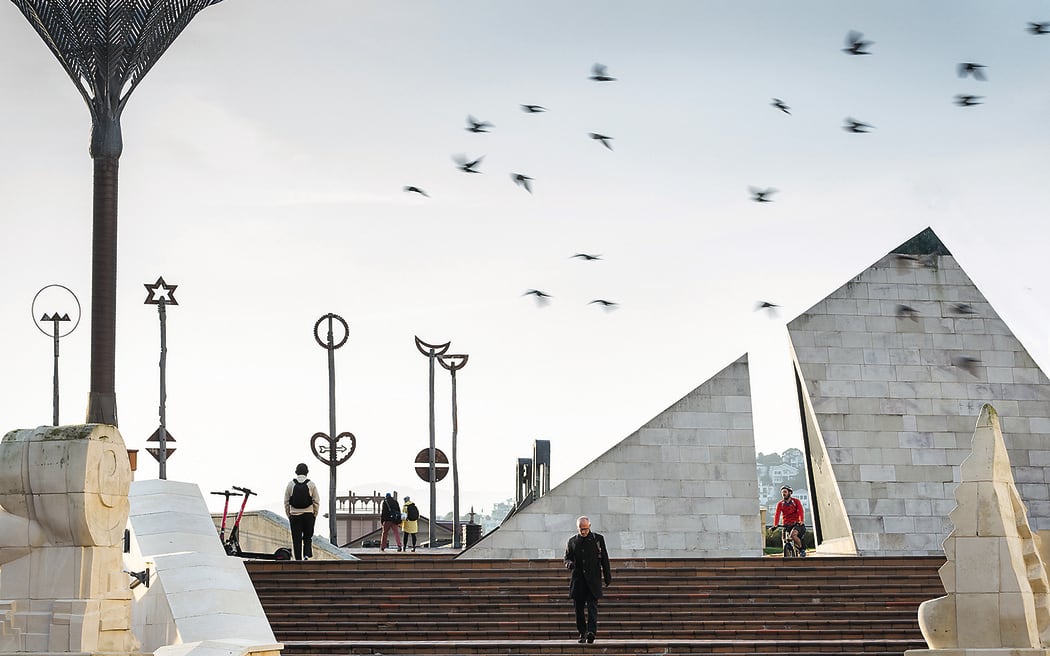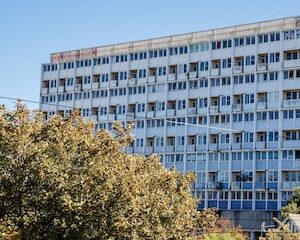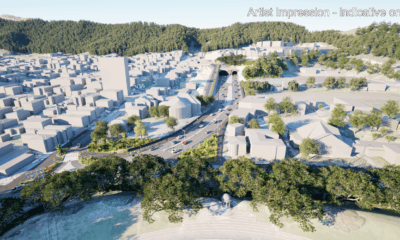Lifestyle
The City to Sea Bridge: A Legacy of Māori Architectural Innovation

The future of Wellington’s City to Sea Bridge is uncertain, but its significance as a landmark of Māori urban design remains. The bridge, which connects Civic Square and Whairepo Lagoon, has been the subject of debate, particularly following recent changes to earthquake strengthening laws that may affect its fate. Designed by the late architect Rewi Thompson (Ngāti Porou, Ngāti Raukawa) alongside John Gray, the bridge was inaugurated in 1993 and is recognized as a pioneering work in the realm of Māori architecture.
Architectural designer Jade Kake, along with co-author Jeremy Hansen, has worked on a book titled Rewi: Āta haere, kia tere, aimed at highlighting Thompson’s contributions to the architectural field. Kake emphasized that Thompson, while foundational to New Zealand’s architectural landscape, remains relatively unknown outside of industry circles. “Many people may know of his projects but not his name. This book serves to elevate his recognition beyond just the architecture profession,” she stated.
Thompson’s portfolio includes several notable public projects, such as the Pacific-influenced canopies at the Ōtara Town Centre and the Pūkenga School of Māori Studies at Unitec. Nevertheless, Kake asserts that the City to Sea Bridge stands out as his most prominent work. She reflects on how Thompson might have perceived the potential demolition of his creations, suggesting he would not be fixated on permanence. “Rewi would likely appreciate the evolving nature of urban landscapes,” Kake noted.
The City to Sea Bridge embodies a significant cultural narrative, illustrating the story of Māui fishing up the North Island, known as Te Ika a Māui. Its design features a split pyramid adorned with authentic pounamu, symbolizing Te Waipounamu, the area from which Māui cast his net. The brick patterns on either side symbolize his fishing line and fish hook on the harbour side and his net on the city side.
Kake highlighted the importance of the bridge within a broader suite of integrated urban projects, including Te Ngākau Civil Square and the Capital E building, both contributing to a cohesive urban environment. She explained that the interconnectivity of these designs is a hallmark of successful urban planning. “If we lose any one component, we risk disrupting the coherence of our urban landscape,” Kake warned.
Regardless of the bridge’s ultimate fate, its legacy is undeniable. Kake noted that its existence has positively influenced the architectural landscape and the experiences of those who have interacted with it. “Even if the physical structure does not endure, its impact on the built environment and the community will continue to resonate,” she stated, underlining the bridge’s role in shaping the work and aspirations of architects and designers.
As discussions continue surrounding the future of the City to Sea Bridge, the architectural community remains hopeful for a resolution that honors its significance. The bridge not only represents a milestone in Māori architecture but also serves as a reminder of the importance of incorporating Māori perspectives in the ongoing evolution of urban spaces.
-

 World1 week ago
World1 week agoPrivate Funeral Held for Dean Field and His Three Children
-

 Top Stories2 weeks ago
Top Stories2 weeks agoFuneral Planned for Field Siblings After Tragic House Fire
-

 Sports3 months ago
Sports3 months agoNetball New Zealand Stands Down Dame Noeline Taurua for Series
-

 Entertainment3 months ago
Entertainment3 months agoTributes Pour In for Lachlan Rofe, Reality Star, Dead at 47
-

 Entertainment2 months ago
Entertainment2 months agoNew ‘Maverick’ Chaser Joins Beat the Chasers Season Finale
-

 Sports3 months ago
Sports3 months agoSilver Ferns Legend Laura Langman Criticizes Team’s Attitude
-

 Sports1 month ago
Sports1 month agoEli Katoa Rushed to Hospital After Sideline Incident During Match
-

 World2 weeks ago
World2 weeks agoInvestigation Underway in Tragic Sanson House Fire Involving Family
-

 Politics2 months ago
Politics2 months agoNetball NZ Calls for Respect Amid Dame Taurua’s Standoff
-

 Top Stories2 weeks ago
Top Stories2 weeks agoShock and Grief Follow Tragic Family Deaths in New Zealand
-

 Entertainment3 months ago
Entertainment3 months agoKhloe Kardashian Embraces Innovative Stem Cell Therapy in Mexico
-

 World4 months ago
World4 months agoPolice Arrest Multiple Individuals During Funeral for Zain Taikato-Fox




















